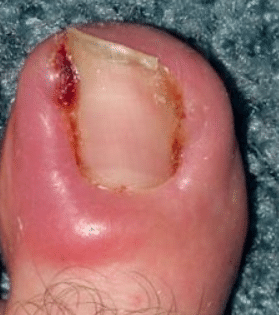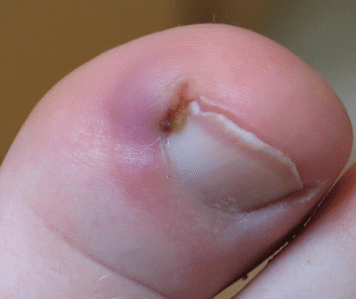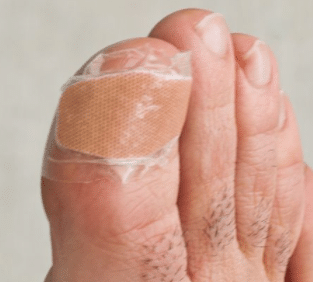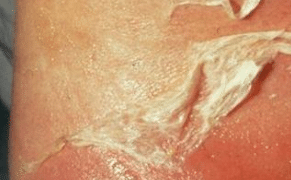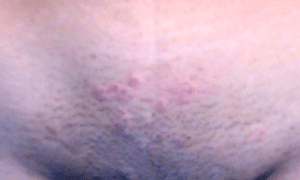An ingrown toenail usually occurs when the two sharp edges or the corners of the nail grow into the skin that surrounds the nail. This is very common on big toenails and it is usually a painful condition. This condition is also known as onychocryptosis or unguis incarnatus. Pain and inflammation at the point where the nail curls into the skin is usually the first symptoms for this condition. After some days, the inflamed area may start to grow extra tissues or in some cases produce a yellowish fluid.
Infected Ingrown Toenail – Overview
If an ingrown toenail is left untreated, it can proceed to cause an infection or even an abscess that may call for surgical intervention. Ingrown toenails are very common in adults and adolescents although the case is rarely reported in children and infants. Research reveals that, more men are affected than women. Any nail can develop an infected ingrown toenail but the condition is very common in the big toe.
An ingrown toe nail can cause problems that may limit your daily functioning. The condition can have three stages which it goes through for it to be fully problematic.
Stage 1
During this stage, there is erythema, trace edema, and the affected person may start feeling some pain from the lateral nail fold. However, the pain is not usually very severe in this case.
Stage 2
At this stage, the affected toe may develop increased or severe pain, it may start producing a discharge from the edge of the nail which may appear to be yellowish in color, and you may start to see some signs of paronychia. Paronychia is a bacterial infection that affects cuticles or the areas surrounding the nail.
Stage 3
In this stage, hypertrophic granulation tissue forms on the lateral wall of the infected ingrown toenail. This is an extra tissue that starts growing on the surrounding of the affected nail as the condition worsens.
Complications of ingrown toenails
In case you developed an ingrown toenail which may lead to the soft tissues of the toes being infected, then it may be possible that cellulitis and even septicemia – a bacterial infection in the bloodstream, could occur. This is very common in people who have underlying conditions such as diabetes, HIV and any other condition that may compromise your immune response. Moreover, the pain that is resulted by an infected ingrown toenail may cause an injury to other joints due to the need to change ones normal activities.
Infected Ingrown Toenail Causes
There are numerous conditions that may result into an infected ingrown toenail. People with poor circulation, such as those who suffer from diabetes and peripheral vascular disorder are the most likely to develop complications such as this. However, there are much more risk factors that we will share below that may make one to develop this problem.
Causes of infected ingrown toenail
- Tightly fitted shoes and high heels
Shoes that we wear may define our status, and some women usually feel comfortable by wearing heels that very long. However, this may be reason why you developed an ingrown toenail especially if you wear the tight shoes very frequently. This is because more pressure is applied on the edges of the nail making it to bend into the surrounding skin. The nail will then continue to grow while curled into the skin and thereafter resulting into an ingrown toenail which may then be followed by an infection.
- Improper trimming of the toenail
When you trim your nails improperly, for example leaving the corners of the nails sharp instead of making them blunt, they may end up penetrating into the skin and cause an infected ingrown toenail. You have to make sure you trim your nails straight across the nail palate to prevent it from having sharp edges that can pierce back into the skin.
- Fungal infection of the nail
Disorders such as fungal infection of the nail may cause deformity of your nail. When the nail is deformed, it loses its normal shape that allows it to grow outwards. In this case, you may find the infected nail rolling back into the skin and growing while it penetrates there. In some cases, this disease can cause the toenail to thicken or to widen and this may be as well the reason for ingrown toenail.
- Injuries or trauma to the nail
If your nail is damaged repetitively, maybe as you play football or knocking your nail numerously may lead to an ingrown toenail. If more pressure is applied on the nail numerously it may result in damaging of the surrounding tissue. In some cases you may end up losing the whole nail completely. Always make sure you avoid any activity that will lead to an injury or trauma to your nails.
- Genetic ingrown toenail
Some sources have revealed that ingrown toenail is somehow connected to genetic inheritance. In this case, if one of your family members has an ingrown toenail, then there is likelihood that you will develop one. Some people have nails that are completely rounded than others or the underlying bone can be more protruded which increases the chances of developing an infected ingrown toenail.
- Poor blood circulation
Also, people who have poor circulation such as those suffering from diabetes and peripheral vascular disorder are usually at higher risk of developing ingrown toenail. This is because nails just as the rest of the body structures need enough supply of nutrients needed to facilitate its normal growth. If the process of circulation of these important minerals is compromised, be sure the toenail will not grow normally and it may end up growing into the skin and cause an ingrown toenail.
Infected Ingrown Toenail Pictures
An infected ingrown toenail obviously is a painful condition that may cause your toe to swell, become red and sometimes even make you unable to walk or where some nice shoes. This condition can form on any of your toes although the case is very common on big toes. In order to elaborate this discussion clearly, we have provided some pictures that will enable you to analyze the situation you or your loved one is at in regard to ingrown toenails.
Symptoms of an Infected Ingrown Toenail
This condition is associated with a number of signs and symptoms. As we said above, the condition undergoes three stages and symptoms may vary from one stage to another as we are going to discuss below.
Symptoms in first stage
At this stage, symptoms may include the following:
- The skin that surrounds the nail may become tender, swollen and hard
- Massive pain when any pressure is applied on the infected ingrown toenail
- A yellowish fluid may be released from the corners of the nail.
Symptoms in case of an infection
If an infection takes place in your ingrown toenail, be sure to experience the following symptoms:
- Reddening and swelling of the skin around the toenail
- Increasing pain even without pressure
- Bleeding from the site
- Cloudy white fluid oozing from the wound formed
- Overgrown skin around the toe.
Infected Ingrown Toenail Home Treatment and Remedy
An ingrown toenail can be treated by any qualified physicians so long as he or she is able to carry out minor surgeries. This may include podiatrists, orthopedic surgeons, hand surgeons, and dermatologists. They can be able to diagnose this condition and treat patients with infected ingrown toenails. They can as well treat an ingrown fingernail, apart from podiatrists whose scope of duty is confined in conditions below the ankle.
Ingrown toenail diagnosis
In the first place, the doctor will find out if your ingrown toenail is infected or not before commencing any treatment. The ingrown toenail is evaluated by asking the patient how the problem developed, and if there was any injury when it formed. You may be asked if you have any other medical problems such as diabetes, allergy or if you had a tetanus short very recently.
Some of the physical examination may include, checking the patients temperature, pulse rate, and blood pressure, carrying out a detailed examination of the affected foot, toenail, and finding out if
There are swollen lymph nodes in the groin. In some cases x-ray may be carried out.
Moreover, a blood test may be carried out if there is a serious infection or the patient has a history of diabetes.
Home treatments for infected ingrown toenail
If the patient is still at the early stages of this condition, home remedies may help to get rid of it and therefore preventing the need of a surgery. In most cases home treatments are very helpful if the ingrown toenail is not infected or if the infection is not much severe. Some of the home remedies for this condition may include the following:
- Soaking the toenail in warm water
You can soak the affected foot in warm water with Epson salt or with an antibacterial agent. The warm water with salt will help to soften the nail and the skin around it so that you can try to lift up the nail grown in the corners of the nail palate. On the other hand, antibacterial agent may help to prevent any infection that may be taking advantage of the wound formed while the nail grew into the skin. You may need to do these four times a day.
- Clean the affected foot
While you carry out any treatment, you have to make sure the affected foot is clean always. This will help to prevent any infections. Wash the foot, including the infected ingrown toenail at least two times in a day with water and soap. Keep the foot dry and clean the rest of the day. Also, cleaning your feet every day may help to keep fungal infections a bay which are also major cause of the infection on your nail that result in ingrown toenail
- Avoid tight shoes
If you have an ingrown toenail should at all time avoid wearing tight shoes and high heels, this is because they make the condition worse and they may even result into bleeding. Instead, you should consider wearing sandals, if possible until the infected ingrown toenail is completely healed.
- Home care activities
Try lifting up both corners of the toenail which is growing into the skin. Then take piece or cotton wool or gauze and roll it so that you can form a small piece or roll. Then place the rolled gauze in between the nail and the skin so that it is in an elevated position. This may be very painful but there is need to do it at home. After you have soaked the foot tries pushing the roll much inside the nail. The gauze should be changed every day. After a week or so this may allow your nail to grow outside and therefore it will not poke into the skin any longer.
- Use of dental floss
You may take a piece of dental floss and thread it under the infected ingrown toenail traversal under both sides and then glue it to the edges of the nail and the skin so that the nail is kept in its place. This may help to remove the nail from the skin so that treatment may be carried out.
- Trimming your nails efficiently
Practice good methods of trimming your nails. Avoid trimming your nails while you leave sharp edges on the corners of the nail, as this will make them easily penetrate the skin to grow inside. Make sure after trimming your nails, you use a nail file to Blunden the edges. If it happened that you cut yourself while trimming them, make sure you wash the wound with antiseptic wash and cover the wound with a bandage to keep off infections.
- avoid injuries
Injuries and traumas to your toenails can be avoided by wearing safety shoes if you are an outside person or if your activities revolve around heavy machineries and jobs. This is because safety shoes make sure your toes are safe and not easily hit by any object that fall on your feet.
- Control your diabetes
Any underlying condition that is associated with other side infections such as diabetes and peripheral vascular disorder should be treated so that they do not cause other conditions such as ingrown toenails. You may visit your medical provider to find out how you can bring down the severity of such diseases.
Medical treatments for infected ingrown toenail
- If there is no any infection found in your ingrown toenail, the nail will be elevated so that it grows outside and conservative treatment applied. This may involve warm water soaks, proper shoes and frequent cleaning of the area.
- In some cases your doctor may choose to use a splint. Numerous types of splints may be used depending on the type, but they all protect the skin from the sharp corner of the nail. Some of the commonly used splints include cotton wicks, plastic strips, plastic tubes and various glue-like substances.
- In some cases, your doctor may try to file or cut the nail down the center in order to change the shape of the nail so as it grows outside. A piece of hard plastic may be used by gluing it to the nail to help it to grow out flatter and in the required shape.
- If there are any extra tissues growing up around the infected ingrown toenail, your doctor may choose to cut the extra tissue to help it to heal faster. Numbing may be required before removal of the tissue is done.
More references
- Why Ingrown toe nails happen: https://www.healthline.com/health/ingrown-toenail
- Managing infected ingrown toenails: https://www.ncbi.nlm.nih.gov/pmc/articles/PMC1472971/
- What to do about an ingrown toenail: https://www.medicalnewstoday.com/articles/166268.php
- What is an ingrown toenail: https://www.emedicinehealth.com/ingrown_toenails/article_em.htm
- An infected ingrown toenail: https://www.healthline.com/health/ingrown-toenail-remedies


